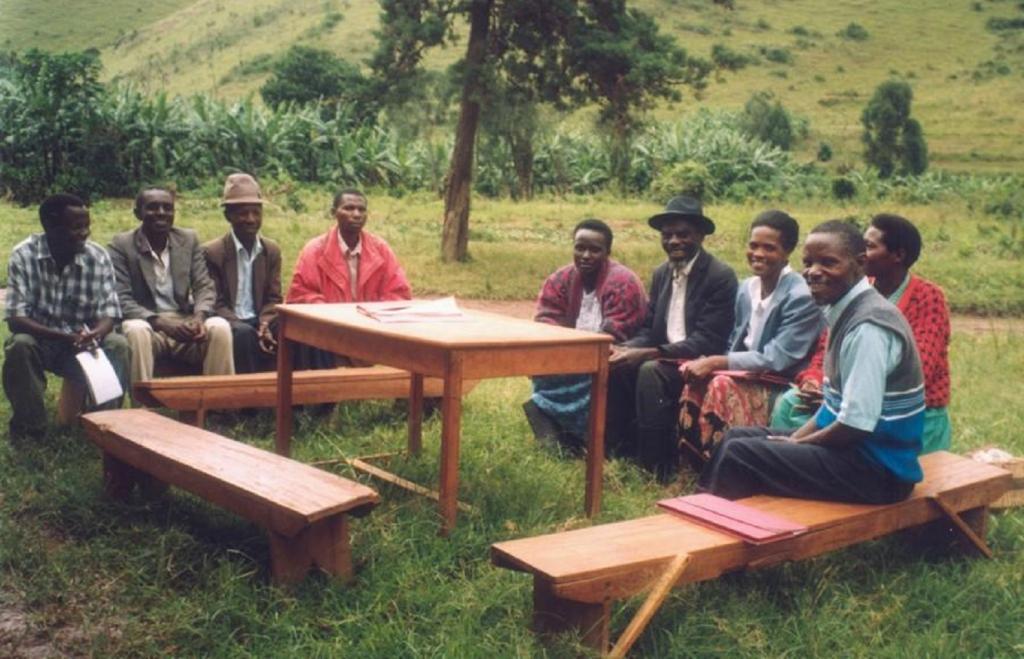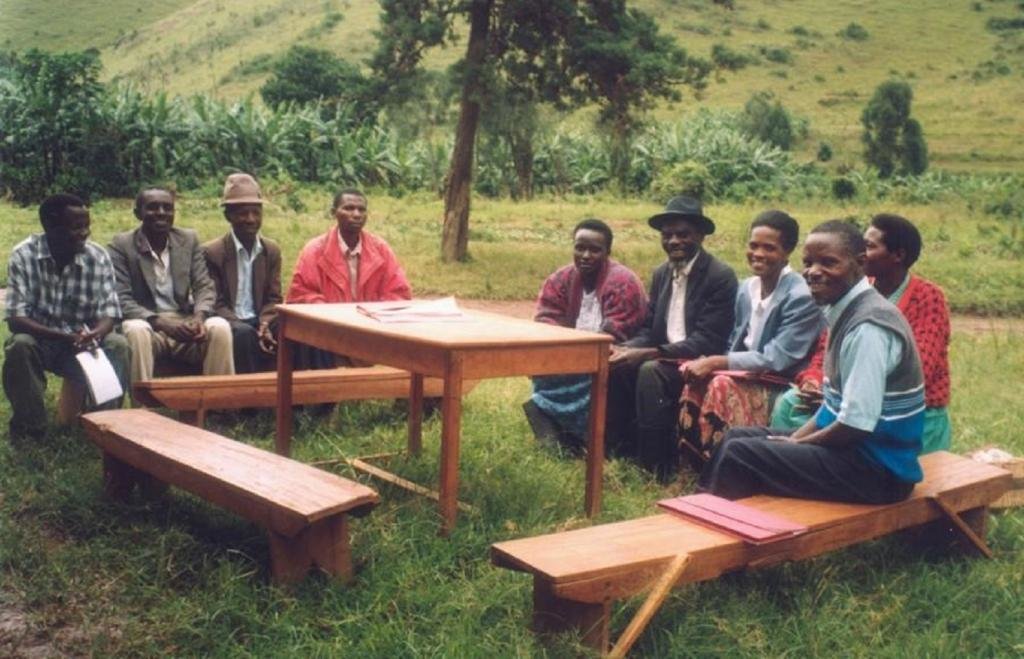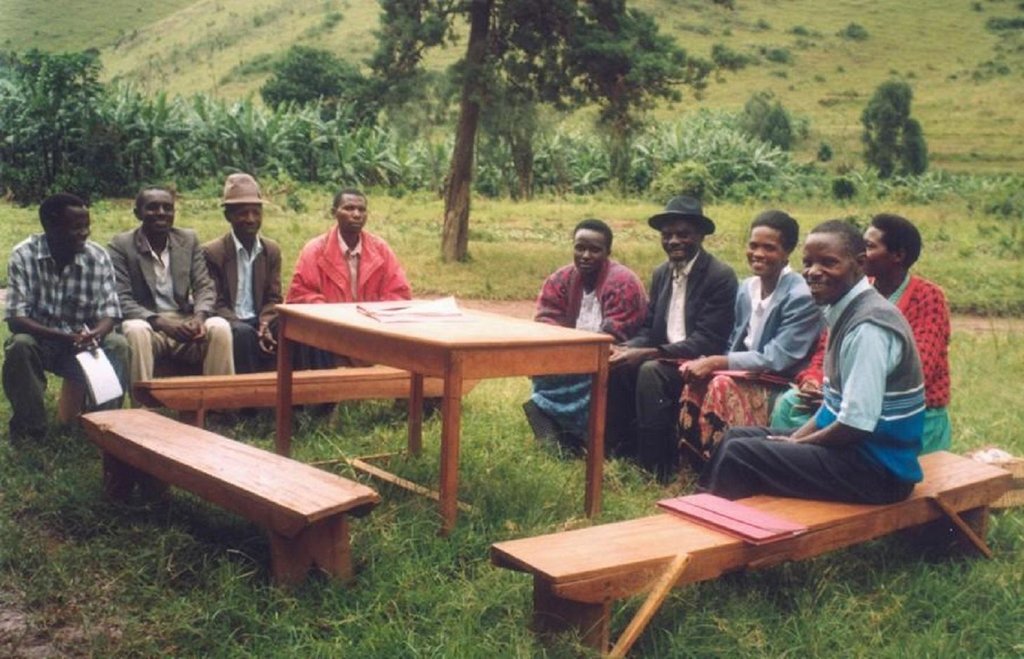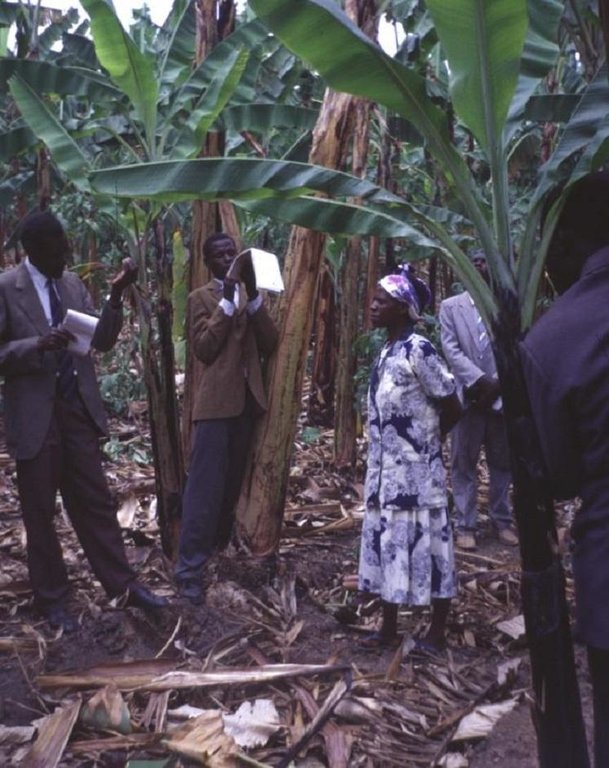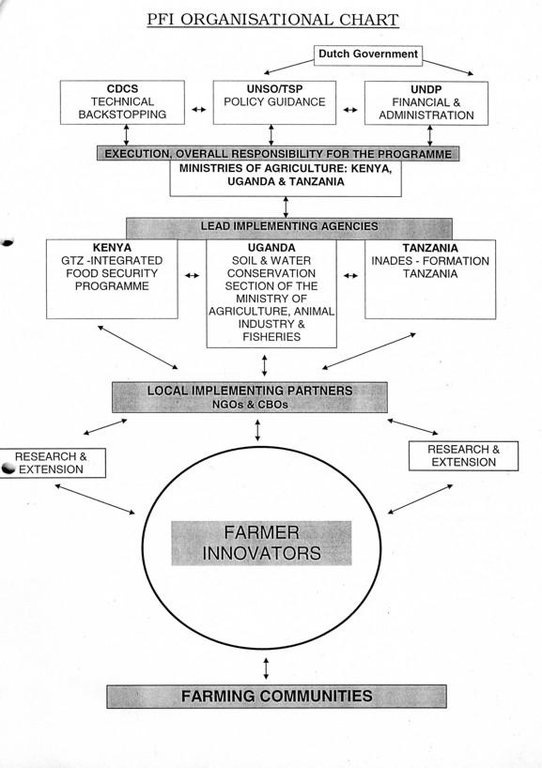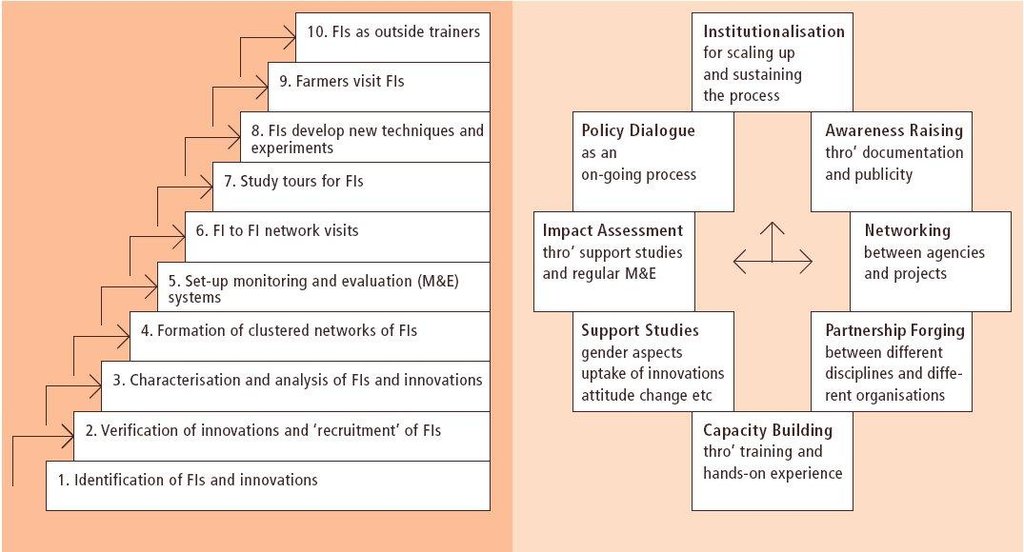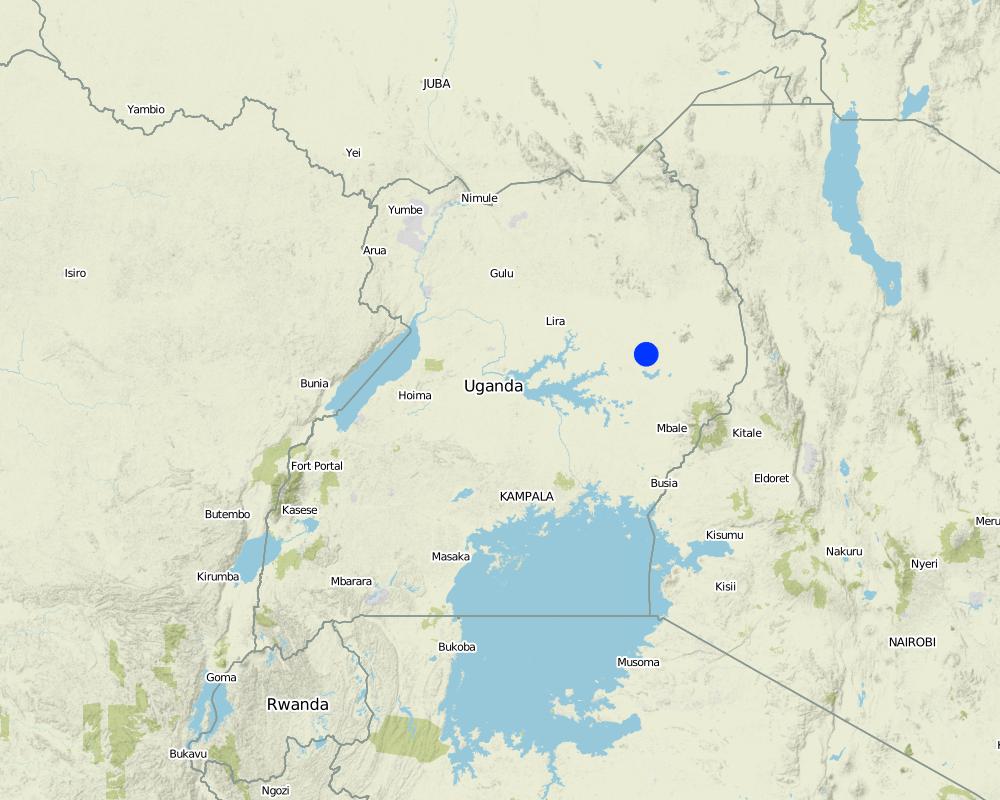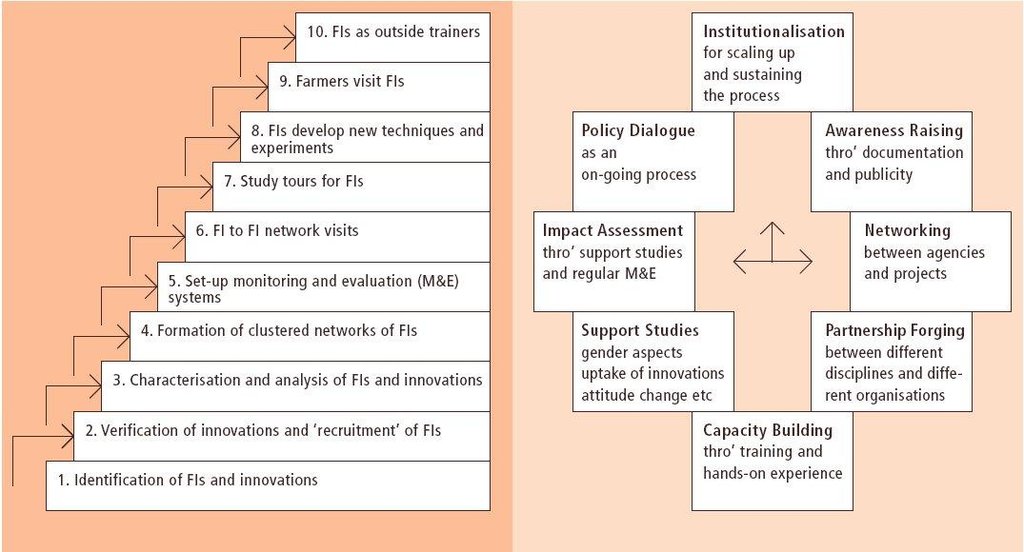Promoting farmer innovation [乌干达]
- 创建:
- 更新:
- 编制者: Kithinji Mutunga
- 编辑者: –
- 审查者: Fabian Ottiger, Deborah Niggli
approaches_2418 - 乌干达
查看章节
全部展开 全部收起1. 一般信息
1.2 参与方法评估和文件编制的资源人员和机构的联系方式
SLM专业人员:
有助于对方法进行记录/评估的项目名称(如相关)
Book project: where the land is greener - Case Studies and Analysis of Soil and Water Conservation Initiatives Worldwide (where the land is greener)有助于对方法进行记录/评估的机构名称(如相关)
FAO Food and Agriculture Organization (FAO Food and Agriculture Organization) - 意大利有助于对方法进行记录/评估的机构名称(如相关)
CIS-Centre for International Cooperation (CIS-Centre for International Cooperation) - 荷兰有助于对方法进行记录/评估的机构名称(如相关)
Ministry of Agriculture, Livestock and Fisheries (MoA) - 肯尼亚1.3 关于使用通过WOCAT记录的数据的条件
编制者和关键资源人员接受有关使用通过WOCAT记录数据的条件。:
是
1.4 SLM技术问卷的参考
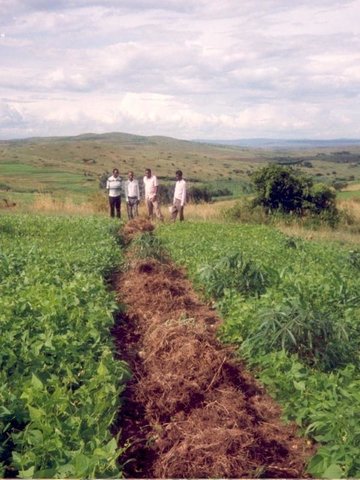
Improved trash lines [乌干达]
Weeds and crop residues laid in bands across the slope of annual crop fields to conserve soil and water, and to incorporate organic matter into the soil after decomposition.
- 编制者: Unknown User
2. SLM方法的描述
2.1 该方法的简要说明
Identification of farmer innovators in SWC and water harvesting, and using them as focal points for visits from other farmers to spread the practices and stimulate the process of innovation.
2.2 该方法的详细说明
该方法的详细说明:
Aims / objectives: The Promoting Farmer Innovation (PFI) approach seeks to build on technical initiatives - innovations in the local context - developed by farmers themselves in dry/marginal areas where the conventional approach of transfer of technology from research to extension agents, and then on to farmers, has so often failed. The approach basically comprises identifying, validating and documenting local innovations/initiatives. Simple monitoring and evaluation systems are set up amongst those innovative farmers who are willing to co-operate. Through contact with researchers, extra value is added to these techniques where possible. Farmer innovators are brought together to share ideas. Finally, best-bet technologies, in other words those that are considered to be good enough to be shared, are disseminated through farmer-to-farmer extension. This takes two forms. First, farmers are brought to visit the innovators in their farms. Secondly farmer innovators are used as teachers/trainers to visit groups of farmers - including FAOs farmer field schools in some cases. Only in this second form of extension is an allowance payable to the innovator. A ten-step field activity methodology has been developed.
Methods: At programme level, there is capacity building of in-line extension and research staff, who are the main outside actors in the programme. In each of the countries the project has been implemented through a government ministry, which partners various NGOs in the field. The principle, and practice, is not to create separate project enclaves, but to work through existing personnel, sharing buildings and vehicles that are already operational in the area. A programme development process methodological framework shows how the ultimate goal of institutionalisation can be achieved. PFIs first phase, completed in 2000, was financed by the Government of The Netherlands, through UNDP, and was active in Kenya, Tanzania and Uganda.
2.3 该方法的照片
2.5 采用该方法的国家/地区/地点
国家:
乌干达
区域/州/省:
East Africa (parts of Kenya, Tanzania and Uganda)
Map
×2.6 该方法的开始和终止日期
注明开始年份:
1996
终止年份(若不再采用该方法):
2000
2.7 方法的类型
- 基于项目/方案
2.8 该方法的主要目的/目标
The Approach focused mainly on SLM with other activities (Better land husbandry practices (eg composting, crop selection))
Improve rural livelihoods through an increase in the rate of diffusion of appropriate SWC/water harvesting technologies based on farmer innovation, and through farmer-to-farmer exchange visits. At a higher level: to demonstrate the effectiveness of such an approach so that it can be institutionalised.
The SLM Approach addressed the following problems: - poor supply of relevant recommendations from research for small scale farmers in marginal areas - poor delivery of SWC technologies (where they exist) to farmers - lack of motivation of research and extension staff - isolation of promising ???innovative??? SWC/water harvesting ideas which address low crop yields, land degradation and poverty - lack of exchange of this knowledge
2.9 推动或妨碍实施本办法所适用的技术的条件
社会/文化/宗教规范和价值观
- 阻碍
Favoured farmer syndrome: where too much attention is given to particular innovative farmers and jealousy is aroused in others
Treatment through the SLM Approach: Avoid working with innovators who are so exceptional that they are outside society and others cannot relate to them. Rotate the farmers who are used as learning points: in other words once another farmer has adopted the technology, use him or her as the focal point.
财务资源和服务的可用性/可得性
- 阻碍
Danger of identifying innovations that are good technically but too expensive for ordinary farmers to implement.
Treatment through the SLM Approach: Linked to point (1) above: beware of farmers who are too exceptional/too rich.
机构设置
- 阻碍
Lack of motivation of research and extension institutions
Treatment through the SLM Approach: Bringing them together with farmer innovatiors
法律框架(土地使用权、土地和水使用权)
- 阻碍
Who gets the credit for the particular innovation?
Treatment through the SLM Approach: Important to make sure that an innovation is traced back within the locality to its roots, identifying the 'owner'. Especially important when a name is attached to an innovation.
The existing land ownership, land use rights / water rights hindered a little the approach implementation Farmers will only invest time and effort in innovation when they have secure land use rights (though not necessarily ownership), which is the case in all the areas where PFI has been operational. Access to land for women was a problem which inhibits women innovating.
其他
- 阻碍
Cultural: Gender imbalance in identification of innovators: women overlooked
Treatment through the SLM Approach: Gender sensitisation and training: bring together the identifiers with the farmers - male and female.
3. 相关利益相关者的参与和角色
3.1 该方法涉及的利益相关者及其职责
- 当地土地使用者/当地社区
- SLM专家/农业顾问
- NGO
All involved et different levels: after implementation mainly government and NGO
- 国家政府(规划者、决策者)
All involved et different levels: after implementation mainly government and NGO
- 国际组织
All involved et different levels: after implementation mainly government and NGO
如果涉及多个利益相关者,请注明领导机构:
International specialists in collaboration with/after discussions with national specialists and land users
3.2 当地土地使用者/当地社区参与该方法的不同阶段
| 当地土地使用者/当地社区的参与 | 指定参与人员并描述活动 | |
|---|---|---|
| 启动/动机 | 被动 | public meetings, interviews/questionnaires, workshops/seminars, rapid/participatory rural appraisal; interviews/Participatory Rural Appraisals etc |
| 计划 | 被动 | rapid/participatory rural appraisal, interviews/questionnaires, public meetings, workshops/seminars; interviews/Participatory Rural Appraisals etc |
| 实施 | 互动 | Mainly: farmer-to-farmer exchange, responsibility for minor steps; partly: responsibility for major steps; interviews/Participatory Rural Appraisals etc |
| 监测/评估 | 互动 | Mainly: public meetings, measurements/observations; partly: workshop/seminars; monitoring, using forms designed mainly by specialists |
| Research | 互动 | on-farm |
3.3 流程图(如可用)
具体说明:
Farmer innovation methodology left: Field activities: the ten steps– from identification through to using innovators as trainers. (Critchley, 2000) right: Programme development processes: the framew
3.4 有关SLM技术选择的决策
具体说明谁有权决定选择要实施的技术:
- 主要是土地使用者,由SLM专家提供支持
解释:
???Best -bet??? technologies chosen by extension agents/researchers based on the selection of innovative farmers??? technologies identified in the field - but the farmers choose (develop) which technology to implement.
Decisions on the method of implementing the SLM Technology were made by by land users* alone (self-initiative / bottom-up)
4. 技术支持、能力建设和知识管理
4.1 能力建设/培训
是否为土地使用者/其他利益相关者提供培训?:
是
明确受训人员:
- 土地使用者
- SWC specialists, extensionists/trainers
培训形式:
- 公开会议
- 课程
培训形式:
- farm visits
涵盖的主题:
Staff seconded from Ministries of Agriculture/NGOs provide: (1) methodology training for participating staff (2) presentational skill training for farmer innovators and (3) training in gender aspects.
4.2 咨询服务
土地使用者有权使用咨询服务吗?:
是
指明是否提供了咨询服务:
- 在固定中心
说明/注释:
Name of method used for advisory service: Farmer innovator approach; Key elements: There are new roles for government/NGO extension staff under this methodology - as trainers and faci, Identify farmer innovators, form networks of farmer innovators, which meet, Bring farmers to se 'best bet' innovations; 1) Advisory service was carried out through: government's existing extension system, non-governmental agency; Extension staff: mainly government employees 3) Target groups for extension: land users
Advisory service is quite adequate to ensure the continuation of land conservation activities
4.3 机构强化(组织发展)
是否通过这种方法建立或加强了机构?:
- 是,适度
具体说明机构的强化或建立程度:
- 本地
具体说明支持类型:
- 能力建设/培训
提供进一步细节:
training (see also Annex A3)
4.4 监测和评估
监测和评估是该方法的一部分吗?:
是
注释:
bio-physical aspects were regular monitored by 0 through observations; indicators: soils, moisture
technical aspects were regular monitored by 0 through observations; indicators: inputs
socio-cultural aspects were ad hoc monitored by 0 through measurements; indicators: number of men/women participating
economic / production aspects were regular monitored by 0 through observations; indicators: yields
area treated aspects were ad hoc monitored by 0 through observations; indicators: None
no. of land users involved aspects were ad hoc monitored by 0 through observations; indicators: None
There were few changes in the Approach as a result of monitoring and evaluation: Some changes, for example (a) increased numbers of women identified as innovators in response to gender sensitisation/training and (b) ???rotation??? of farmer innovators used for training - that is not using the same farmers all the time, as this can create envy. E.g. also better integration with government services/system for technical backstopping and extension
4.5 研究
研究是该方法的一部分吗?
是
明确话题:
- 技术
- socio-economics
提供进一步的细节,并指出是谁做的研究:
Theoretically, researchers should respond to the farmers??? research agenda, though this has proved difficult to achieve in practice. Apart from process monitoring of the methodology, which has led to improvements, technical research into the innovations has been relatively weak.
Research was carried out on-farm
5. 融资和外部物质支持
5.1 该方法中SLM组成部分的年度预算
如果不知道准确的年度预算,请给出一个范围:
- 100,000-1,000,000
注释(例如主要的资助来源/主要捐助者):
Approach costs were met by the following donors: government (national government): 20.0%; international (International agency): 60.0%; local community / land user(s) (-): 20.0%
5.2 为土地使用者提供财政/物质支援
土地使用者是否获得实施该技术的财政/物质支持?:
否
5.3 对特定投入的补贴(包括劳动力)
如果土地使用者的劳动力是一项重要的投入,那么是不是:
- 自愿
注释:
done by the farmers themselves
plant materials - farmers often are given or collecting planting.
Support to institutions has been moderate: it has mainly taken the form of transporting existing groups (for example womens groups/church groups) to learn from farmer innovators.
5.4 信用
是否根据SLM活动的方法给予信用值?:
否
6. 影响分析和结论性陈述
6.1 方法的影响
该方法是否改善了阻碍SLM技术实施的土地使用权/用户权问题?:
- 否
- 是,很少
- 是,中等
- 是,支持力度很大
Gender sensitisation training may have helped. The problem is unlikely to be overcome in the near future.
6.3 方法活动的可持续性
土地使用者能否维持通过该方法实施的措施(无外部支持的情况下)?:
- 不确定
若否或不确定,请具体说明并予以注释:
There are examples of spontaneous voluntary continuation of farmer innovator groups in all three countries - but on a reduced level after initial project support ended.
6.4 该方法的长处/优点
| 编制者或其他关键资源人员认为的长处/优势/机会 |
|---|
| Builds on local ideas (How to sustain/ enhance this strength: Continue the approach and institutionalise.) |
| Revitalises the extension service (How to sustain/ enhance this strength: Train and make use of existing Government extension agents.) |
| attractive to stakeholders at all levels (How to sustain/ enhance this strength: Involve and inform stakeholders at all levels of plans and progress.) |
| Gives land users more confidence in their own abilities (How to sustain/ enhance this strength: Continue to prioritise farmers and keep them at centre of activities.) |
| Offers new locally tested ideas/technologies which work (How to sustain/ enhance this strength: Keep the focus on the farmers??? initiatives and use participatory technology development processes to improve these technologies.) |
6.5 该方法的弱点/缺点以及克服它们的方法
| 编制者或其他关键资源人员认为的弱点/缺点/风险 | 如何克服它们? |
|---|---|
| Dependent on individual commitment and flexibility | Training in skills and methodologies. |
| Does not follow the conventional institutional chain of command | Considerable training in skills and methodologies required. |
| Sometime confers too much prestige on a particular group of ???favoured farmers??? | Rotate??? farmers who are the focus of attention. |
| Researchers reluctant to respond to farmers??? agenda | Effort needed to convince research staff of the need for, and potential benefits from, joint Critchley WRS (2000) Inquiry, Initiatives and Inventiveness: Farmer Innovators in East Africa. Phs Chem Earth (B), Vol 25, no 3, pp 285??¡§288Critchley WRS (2000) Inquiry, Initiatives and Inventiveness: Farmer Innovators in East Africa. Phs Chem Earth (B), Vol 25, no 3, pp 285??¡§288Critchley WRS (2000) Inquiry, Initiatives and Inventiveness: Farmer Innovators in East Africa. Phs Chem Earth (B), Vol 25, no 3, pp 285??¡§288Critchley WRS (2000) Inquiry, Initiatives and Inventiveness: Farmer Innovators in East Africa. Phs Chem Earth (B), Vol 25, no 3, pp 285??¡§288research with farmers. |
7. 参考和链接
7.1 方法/信息来源
- 实地考察、实地调查
- 与土地使用者的访谈
7.2 参考可用出版物
标题、作者、年份、ISBN:
Critchley WRS (2000) Inquiry, Initiatives and Inventiveness: Farmer Innovators in East Africa. Phs Chem Earth (B), Vol 25, no 3,Mutunga K and Critchley W (2001) Farmers??? initiatives in land husbandry. Regional Land Management Unit, Nairobi, KenyaCritchley W and Mutunga K (2003) Local innovation in a global context: documenting farmer initiatives in land husbandry through WOCAT.Critchley et al. (1999). Promoting farmer innovationPromoting farmer innovation VIDEO
可以从哪里获得?成本如何?
RELMA, Nairobi (cost free)RELMA, Nairobi (cost free)
标题、作者、年份、ISBN:
Mutunga K and Critchley W (2001) Farmers initiatives in land husbandry. Regional Land Management Unit, Nairobi, Kenya
标题、作者、年份、ISBN:
Critchley W and Mutunga K (2003) Local innovation in a global context: documenting farmer initiatives in land husbandry through WOCAT.
标题、作者、年份、ISBN:
Critchley et al. (1999). Promoting farmer innovation
可以从哪里获得?成本如何?
RELMA, Nairobi (cost free)
标题、作者、年份、ISBN:
Promoting farmer innovation VIDEO
可以从哪里获得?成本如何?
RELMA, Nairobi (cost free)
链接和模块
全部展开 全部收起链接

Improved trash lines [乌干达]
Weeds and crop residues laid in bands across the slope of annual crop fields to conserve soil and water, and to incorporate organic matter into the soil after decomposition.
- 编制者: Unknown User
模块
无模块


